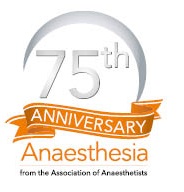Speak up! Barriers to challenging erroneous decisions of seniors in anaesthesia

Anaesthesia 2016; 71: 1332-40.
T. Beament and S.J. Mercer
Summary
‘Speaking up’ or the ability to effectively challenge erroneous
decisions is essential to preventing harm. This mixed-methods
study in two parts explores the concept of ‘barriers to
challenging seniors’ for anaesthetic trainees, and proposes
a conceptual framework. Using a fully immersive simulation
scenario with unanticipated airway difficulty, we investigated
how junior anaesthetists (one to two years of training)
challenged a scripted error. We also conducted focus
groups with senior trainees (three to seven years of training)
and undertook a ‘thematic network analysis’ of responses.
Junior anaesthetic trainees challenged erroneous decisions
effectively, but trainees with an additional year of experience
challenged more quickly and effectively, combining ‘crisp-advocacy-
inquiry challenge’ with ‘non-verbal cues’. Focus
group analysis conceptualised a ‘barrier network’ with three
main themes: concerns around relationships; decision-making;
and risk/cost–benefit. Emotional maturity is an
important protective layer around decisions to challenge.
Despite significant multifactorial barriers, systematic training
in effective ‘speaking up’ could improve the confidence and
ability of juniors to challenge erroneous decisions.
As anaesthetists, communication is at the heart of everything
we do. We use a wide range of communication skills every
day, communicating with our patients and members of
multidisciplinary teams face to face (or mask to mask?), via
email, and now increasingly via virtual means. By now, we
are all aware of what can happen when communication goes
awry. Beament and Mercer used a simulated scenario in which
a ‘confederate’ consultant anaesthetist made an erroneous
decision to assess how first or second year-core trainees
approached the situation. They also held focus group sessions
with more senior trainees for detailed exploration of barriers
to speaking up (defined as communicating other team
members’ doubts, differing opinions, or potential problems
about decisions or course of action in medical care). When
I reflect on similar experiences in my own training, these
themes come as no surprise – do we inadvertently put barriers
up for our colleagues to speak up?
‘Seniors must actively contribute to creating a culture where all team members are valued, decision-making is shared, and humiliation or bullying repercussions of conflict are no longer acceptable.’
Being able to speak up is one of the duties set out by the
GMC in ‘Good medical practice’ [1]. Beament and Mercer
note that ‘failure to challenge erroneous decisions contributes
to patient morbidity and mortality’. There have been many
high-profile examples of this, where a different outcome
could have occurred if members of the team had spoken up
or if they had been listened to when they did. The article’s
literature review notes 31 barrier themes that had previously
been identified – it is surprising that anyone ever speaks up
when there is so much on the line.
The thematic analysis of the focused discussions revealed
22 basic themes that were grouped into three second level
themes (‘relationship concerns’, ‘decision-making concerns’
and ‘risk/ cost-benefit concerns’), explaining the global
theme of ‘barriers to challenging erroneous decision in
anaesthetic trainees’ (Figure 1). Not all of these barriers exist
in every situation, but there is value in being aware of them.
Communication is a two-way street – if you are the more
senior anaesthetist in such a dynamic, being aware of barriers
and taking active steps to acknowledge and mitigate them
is just as important as overcoming the barriers to speaking
up. The article could not be clearer:
‘Seniors must actively
contribute to creating a culture where all team members are
valued, decision-making is shared, and humiliation or bullying
repercussions of conflict are no longer acceptable.’
Speaking up does not come naturally to everyone. Thankfully,
the authors make it clear that the verbal and non-verbal
cues
‘which seemed particularly powerful in gaining the
confederate consultant’s attention’
can be learned [2]. They
describe the use of ‘crisp-advocacy-inquiry challenge’ as an
effective means of communicating in this situation. In their
discussion, they question whether
‘learning such speaking
up skills should be included in curricula to improve patient
safety’.
I am sure that we will all have been on courses on
airway management, but do we give enough priority to
attending communication courses? Perhaps this is something
to consider as we emerge into the post-pandemic era, when
face-to-face events return.

Above: Figure 1
Rephrasing my first sentence, we might say that as humans,
communication is at the heart of everything we do. Improving
communication may not only benefit our clinical practice – it
may benefit our non-clinical roles and personal life as well.
Keith Hodgson
Vice Chair, Trainee Committee of the Association of
Anaesthetists
ST7 in Anaesthesia, South East Scotland School of Anaesthesia
References
- General Medical Council. Good medical practice, 2019.
www.gmc-uk.org/ethical-guidance/ethical-guidance-for-doctors/good-medical-practice (accessed 6/4/2021).
- Okuyama A, Wagner C, Bijnen B. Speaking up for patient safety by
hospital-based health care professionals: a literature review.
BMC
Health Services Research
2014; 14: 61.